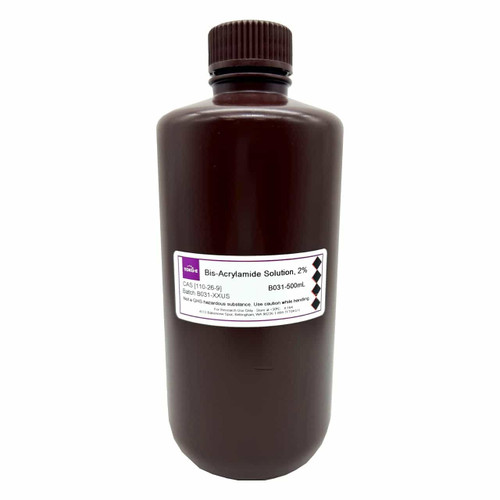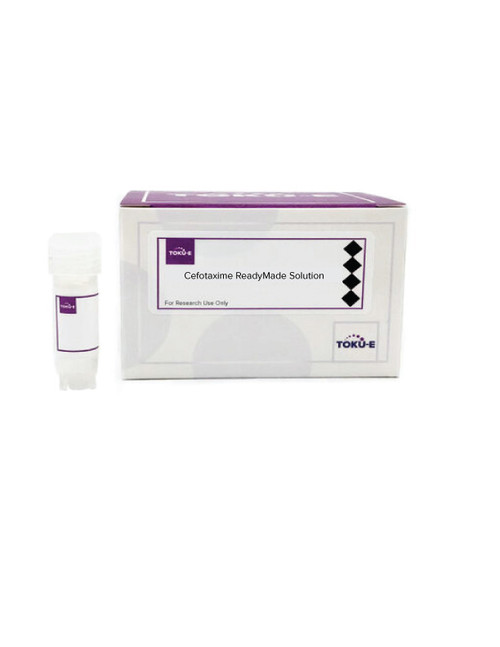Acrylamide Solution, 30% (w/v) is a ready-to-use solution formulated in ultra-pure water. It is used for electrophoresis to separate proteins and nucleic acids.
Solution-based preparations reduce the risk of exposure to powder and associated potential health risks of powder formulations.
This product is considered a dangerous good. Please contact us for questions.
We also offer:
- Bis-Acrylamide Solution, 2% (B031)
| Microbiology Applications | Acrylamide and bis-acrylamide can be synthetically modified into new polymers and compounds with antibacterial properties. |
| Electrophoresis Applications |
Acrylamide is fequently used in sodium dodecyl sulfate polyacrylamide gel electrophoresis (SDS-PAGE). Polyacylamide gels contain linear acrylamide polymers which form small pores allowing separation of proteins and nucleic acids based on molecular weight. Acrylamide (Grade II) is produced by enzyme conversion, eliminating the residual by-products generated via chemical synthesis. It is purified with a proprietary purification method which results in Acrylamide with ultra-low turbidity (<0.5 NTU, versus ~2.0 NTU for molecular biology grade Acrylamide) and <0.005% insolubles which ensures high resolution quality. The purity of Acrylamide used in the polymerization process determines the uniformity of the gel matrix. Impurities can impact the performance of the acrylamide gel formed, since the voltage across the gel is affected by the ionic charge of the gel and usage buffers. |
| References | Zhang A (2015) Synthesis and antimicrobial activities of Acrylamide polymers containing quaternary ammonium salts on bacteria and phytopathogenic fungi. React. Func. Polymers 88:39-46 |







